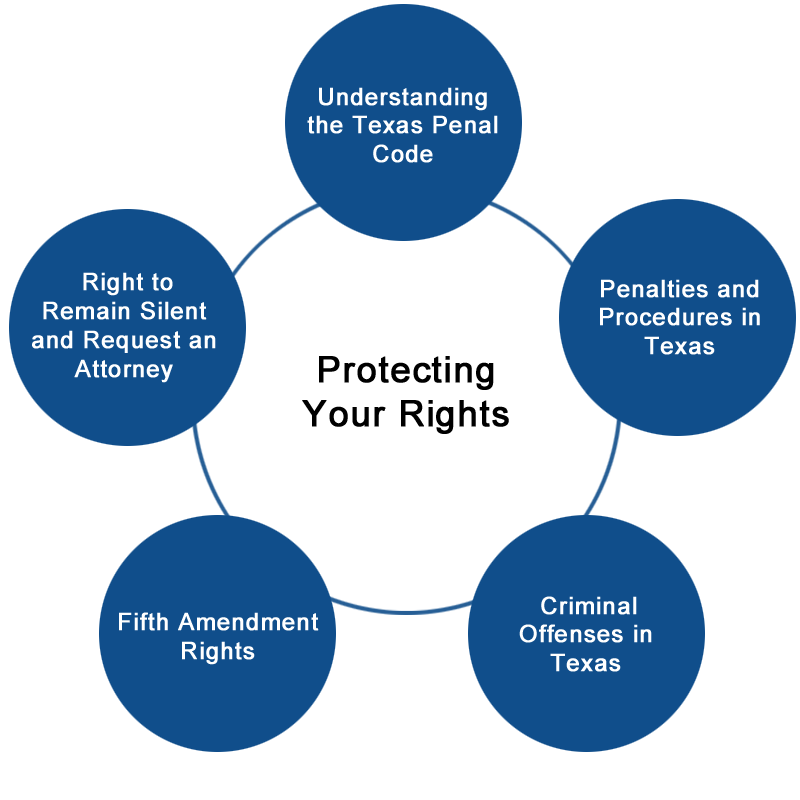
Texas Penal Code – Texas Criminal Statutes and Criminal Laws Explained
Serving as a guide to the penalties, procedures and criminal offenses in the state of Texas, the Texas Penal Code serves as a comprehensive guide to criminal behavior and how it is addressed in the state. In the following easy-to-understand guide, you’ll be given a broad understanding of the law’s parameters and the way the Texas Penal Code was designed to establish the law and dictate how it is applied in the pursuit of public safety.
This guide also aims to assist you in protecting your rights and challenging criminal accusations that have been made against you. In that regard, perhaps the most important thing to know is your own Fifth Amendment rights against self-prosecution. As a key element in protecting the principles of due process and fairness, this cornerstone of American democracy ensures that you have the right when facing criminal accusations to remain silent and request an attorney.
We Believe In
Having Your Chargers Dismissed or Reduced
With a track record of success, our firm consistently achieves favorable outcomes by reducing charges and securing dismissals in legal cases.
Empowering & Educating You
Our primary objective is to empower and educate you. We are dedicated to providing the necessary support, guidance, and knowledge to help you make informed decisions.
Payment Plans & Free Evaluations
Life is filled with unexpected events, and we understand that unforeseen circumstances can arise. That’s why we offer accessible payment plans for legal fees, ensuring that you have flexible options to manage your financial obligations during this challenging time.
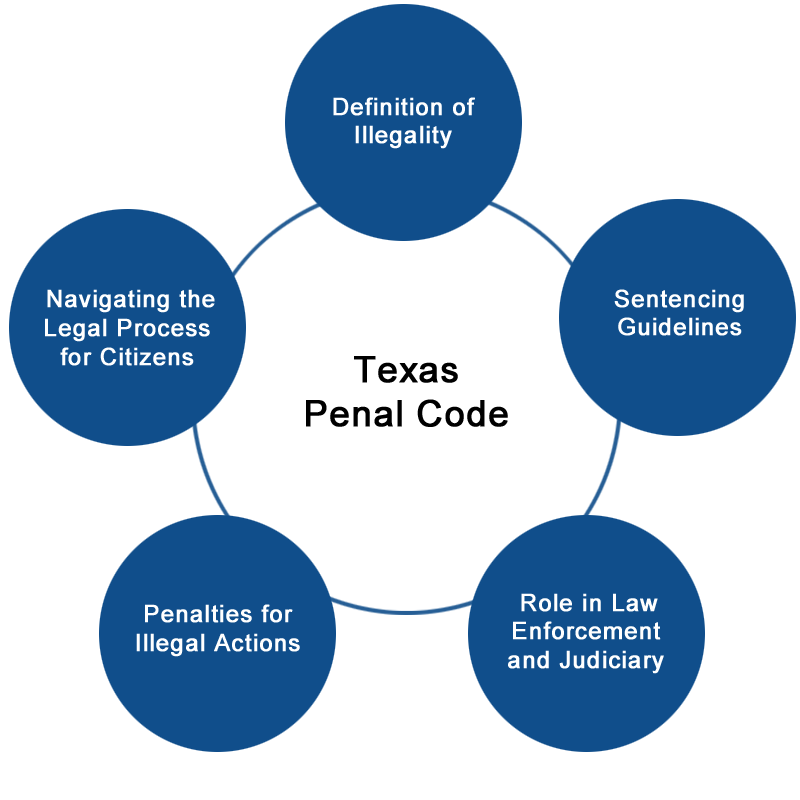
The Texas Penal Code: An Introduction
Outlining various crimes and their punishments, the Texas Penal Code defines what constitutes illegality in the state of Texas and provides sentencing guidelines for appropriate consequences. Serving law enforcement, the judiciary, and ordinary citizens, a penal code acts as a rulebook for the State of Texas, maintaining order and protecting society by proscribing clear penalties for illegal actions.
For citizens, it aids in navigating the legal process. This can be particularly helpful for those accused of breaking the law, as it can provide insight into the charges against them, empowering them to negotiate plea deals, approach a defense and understand potential outcomes.
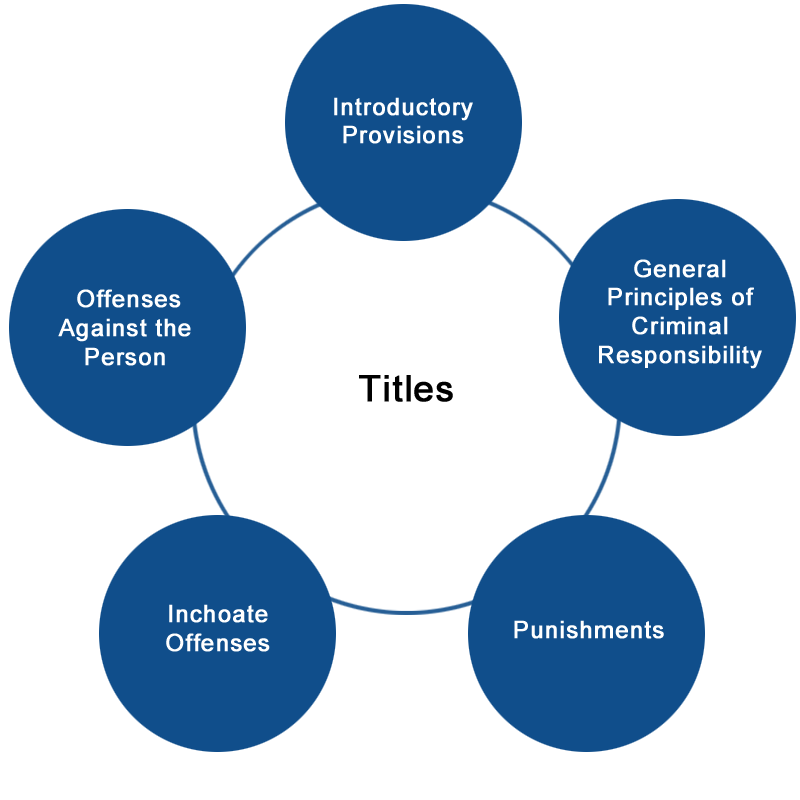
The Texas Penal Code is broken down into the following:
Introductory Provisions (Title 1): This section covers the essential rules, defining terms used throughout the code and explaining how the code works.
General Principles of Criminal Responsibility (Title 2): This section explains what constitutes a crime, as well as how mental state factors into guilt and ways that one can be held responsible for another’s actions.
Punishments (Title 3): This section defines which types of punishments the state can render against those found guilty of a crime, from fines and probation to jail time.
Inchoate Offenses (Title 4): This section describes inchoate – or incomplete – offenses, such as conspiracy or attempted crime. While not crimes in and of themselves, as steps toward crime they are subject to criminal prosecution.
Offenses Against the Person (Title 5): This section summarizes crimes that cause harm to other people, such as assault and murder.
Call 1 (866) 875-5996 or Schedule a Free Case Evaluation Online
Offenses Against the Family (Title 6): This section outlines crimes committed between family members such as domestic violence or bigamy.
Offenses Against Property (Title 7): This section covers crimes that damage property, such as arson or vandalism, as well as crimes that deprive others of property, such as burglary or theft.
Offenses Against Public Administration (Title 8): Covering crimes such as bribery or perjury, this section details crimes that interfere with the operation and administration of government.
Offenses Against Public Order and Decency (Title 9): The section covers crimes such as public intoxication and disorderly conduct, protecting the peace and safety of the community.
Offenses Against Public Health, Safety and Morals (Title 10): Covering actions that threaten the well-being of the public, this section covers various drug crimes as well as offenses like driving while intoxicated (DWI).
Special Offenses (Title 11): As not all crimes fit neatly into a category, such as terrorism or identity theft, this section covers a wide range of crimes.
Each of these titles is subdivided into chapters that break that title down into topics – for example, under Title 5, Offenses Against the Person, you’d find a chapter on assaultive offenses including physical crimes of a harmful nature. Each of these chapters is further subdivided into sections that explain each criminal offense, what needs to be proven to show guilt, and what possible punishments may be.
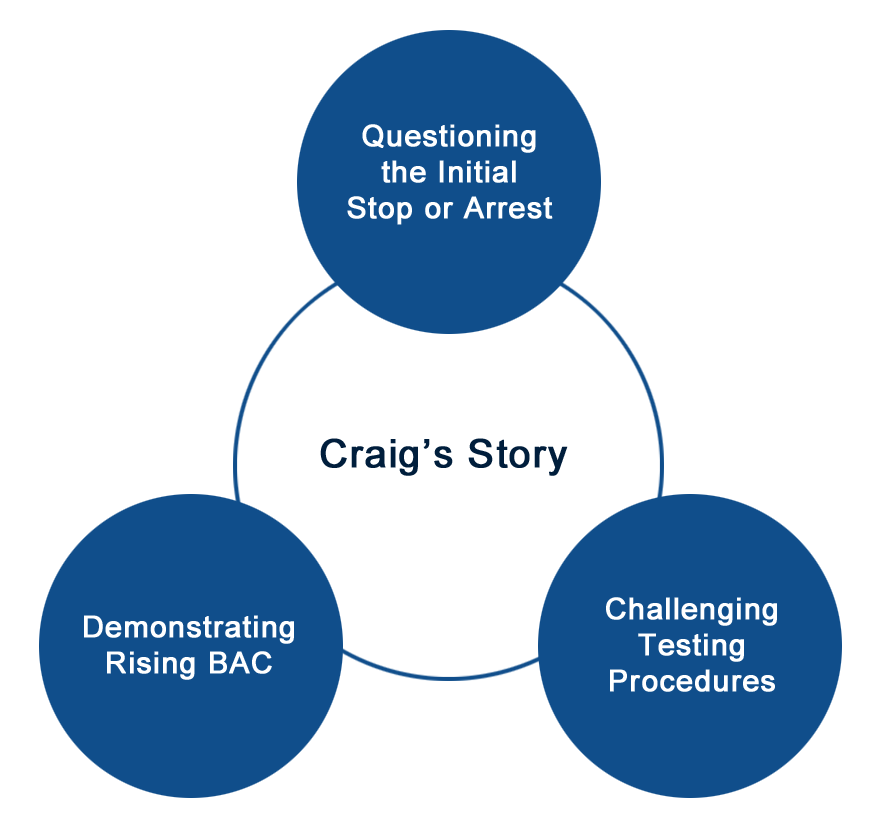 A Hypothetical Example: Craig’s Story
A Hypothetical Example: Craig’s Story
The following scenario will help you better understand how knowledge of the Texas Penal Code can be helpful when faced with potential charges.
Craig is a grocery store manager who was recently charged with DWI. Understanding how serious these charges are, Craig begins searching the Texas Penal Code for more information about DWI charges in the state. Under Title 10, Offenses Against Public Health, Safety and Morals, he finds the chapter on DWI Offenses under section 49:04.
Having gained a fuller understanding of the legal limits for BAC, penalties that stem from a conviction, and his rights under the law, he contacts a legal professional to help him face the charges and potentially have the charges reduced or dismissed.
He secures an attorney with a successful record of helping clients in similar DWI situations, who proposes the following strategies:
- • Questioning the Initial Stop or Arrest: Craig’s attorney can challenge the legality of the initial traffic stop, rendering any evidence collected during the stop inadmissible, or the legality of the arrest, arguing that insufficient evidence existed that he was impaired.
- • Challenging Testing Procedures: Field tests can be highly subjective – for example, signs of fatigue could be mistaken for signs of intoxication – and breathalyzer equipment can sometimes be unreliable if not properly calibrated.
- • Demonstrating Rising BAC: Craig’s attorney could argue that, while his BAC was above the limit at the time of testing, it was below the limit while he was driving, rising only as the body absorbed alcohol into the bloodstream.
While Craig’s attorney will be the one pursuing these strategies, Craig’s own understanding of the law puts him in a much stronger legal position to see his charges reduced or dismissed. As a direct result of this, Craig saw his charges reduced from the typical three days to six months in jail that would have come from a Class B misdemeanor DWI conviction.
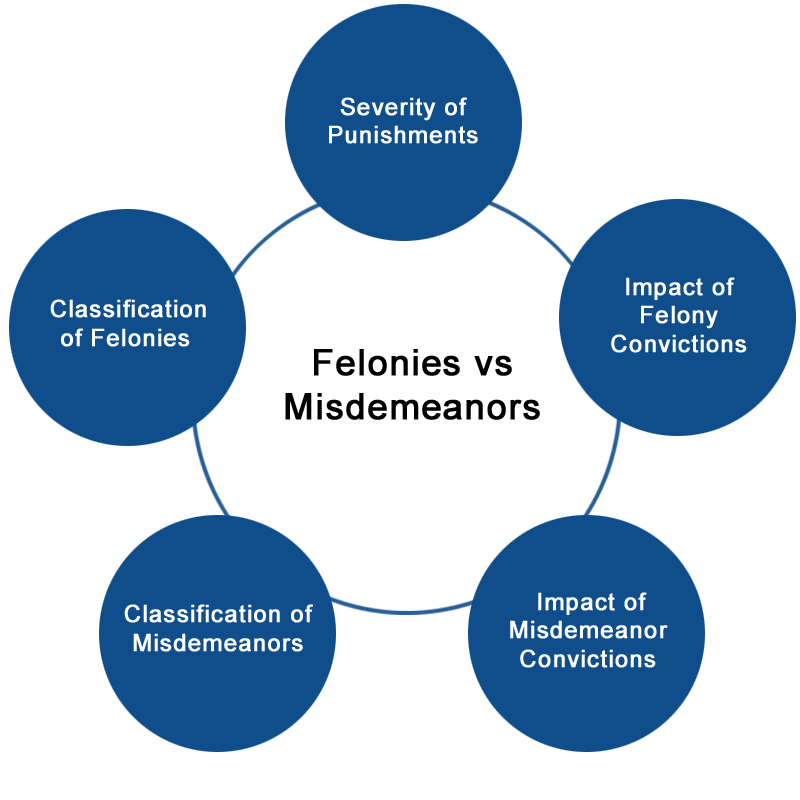 The Difference Between Felonies and Misdemeanors
The Difference Between Felonies and Misdemeanors
As a way of classifying increasingly serious crimes, misdemeanors and felonies allow for greater penalties for greater offenses. Misdemeanors, being the less serious, often result in a prison sentence of up to one year in county jail. Felonies carry stronger penalties including incarceration in a state prison, life in prison, or even the death penalty.
The long-term ramifications of a felony conviction can include long-term effects on housing, employment, professional qualifications, and civil rights such as voting or carrying a firearm. That said, even a misdemeanor conviction can impact professional licensing, social standing, and educational or employment opportunities.
The classification of misdemeanors and felonies breaks down as follows:
- • Class C Misdemeanor: Often resulting in just a fine, this classification is for the least serious offenses such as traffic violations.
- • Class B Misdemeanor: Resulting in up to 180 days in jail, this classification covers crimes such as first-offense DWI.
- • Class A Misdemeanor: Carrying up to a year in jail, this is the most serious classification of misdemeanor.
- State Jail Felony: The least serious form of felony, this classification carries a potential state jail sentence between 180 days and two years.
- • Third-Degree Felony: Including crimes such as kidnapping or elevated DWI, this classification carries a prison sentence of 2-10 years.
- • Second-Degree Felony: Carrying a prison sentence between 2-20 years, this classification covers crimes such as aggravated assault.
- • First-Degree Felony: Reserved for more serious crimes including sexual assault, a first-degree felony conviction can result in a prison sentence between five years and life.
- • Capital Felony: The highest classification of felony, reserved for crimes such as capital murder, a capital felony is punishable by the death sentence or life in prison.
These classifications – and the crimes they describe – are specified in the Texas Penal Code.
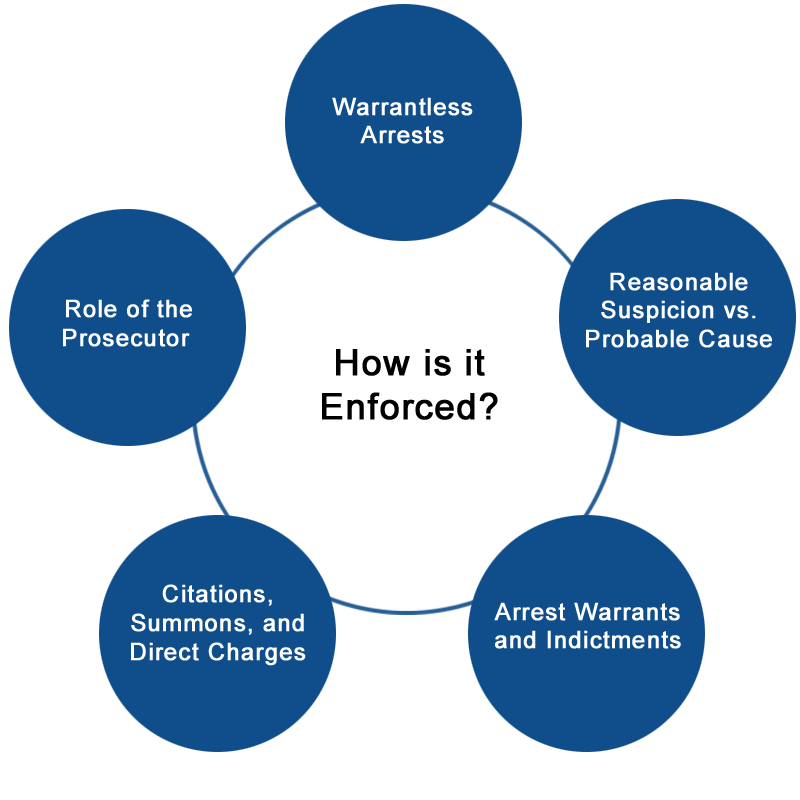 How the Texas Penal Code is Enforced
How the Texas Penal Code is Enforced
If an officer of law enforcement feels that a section of the Texas Penal Code has been violated, they can initiate a warrantless arrest of the suspect. First, however, they must determine if they have reasonable suspicion or probable cause to make the arrest.
Reasonable Suspicion is based on the officer’s own observations determining whether a crime is occurring or has occurred. Considered a lower standard of proof than probable cause, reasonable suspicion simply contends that the officer’s appraisal of the situation warranted an arrest.
Probable Cause requires more than just a law enforcement officer’s own judgement, relying more on facts and evidence that would lead a reasonable person to believe that a crime was committed by the suspect.
An arrest can also be made following the issuance of an arrest warrant. One scenario that could lead to this is a crime being reported by a victim or a witness, providing law enforcement with details about the incident, descriptions of the alleged perpetrators, and any relevant evidence. Another scenario would be when a grand jury, consisting of 12 to 23 citizens, issues an indictment based on having probable cause to believe the individual committed that crime.
A citizen can also face charges by being issued a citation or summons to court to answer alleged criminal charges, or by having charges filed directly by the prosecutor. Juveniles may also face charges directly from the court through juvenile court proceedings.
Once the arrest has been made, the suspect can then be formally charged under the Texas Penal Code. The task of enforcing the code and charging citizens with a crime rests on the prosecutor of the jurisdiction where the crime occurred. There are four factors they must consider during this process.
First, they must evaluate the evidence including police reports, witness statements and relevant facts to determine whether guilt can be proven beyond a reasonable doubt. The second factor the prosecutor will consider is the severity of the crime, with more serious crimes such as homicide being more likely to face prosecution. The third consideration is the public’s interest, both the impact the crime had on the community and the message it would send to prosecute or not. Finally, the prosecutor will consider the victim’s wishes as to whether they would like to press charges or not.
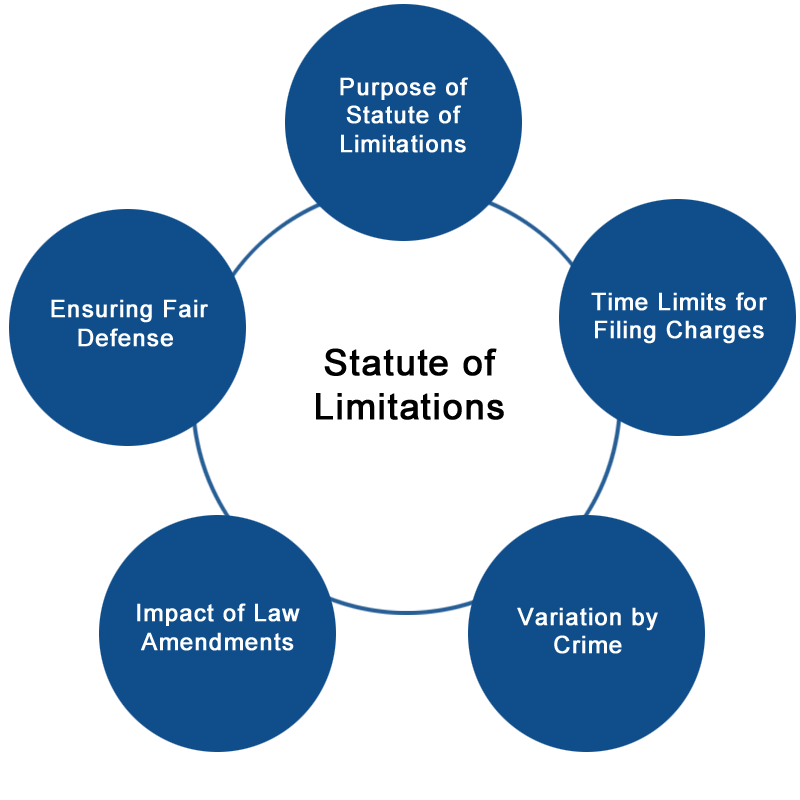 Statute of Limitations in Texas
Statute of Limitations in Texas
As they operate under the legal standards and principles of fairness, prosecutors must ensure that any charges against a citizen of the state are based on sufficient evidence. While this requires a thorough examination of the facts at hand, prosecutors do face a time limit on filing charges known as the statute of limitations.
Serving as a ticking clock for when charges can be filed, one that starts when the alleged crime is committed, the statute of limitation exists to ensure that the accused has the ability to mount a defense and that evidence is not lost as time goes on. These statutes vary from one crime to another, and can sometimes change as the law is amended. Because of this last factor, it can be important to understand what the statute of limitations is, and what it was when the alleged crime occurred.
At present, the Statute of Limitations in Texas breaks down as follows:
- • Crimes With a Two-Year Statute of Limitations: Misdemeanors
- • Crimes With a Five-Year Statute of Limitations: Burglary, arson or theft.
- • Crimes With Ten-Year Statute of Limitations: Sexual assault (although in cases where biological evidence exists, there is no statute of limitations).
- • Crimes With No Statute of Limitations: Murder, manslaughter
Facing Charges in Court
Those accused of a crime in Texas, as in other states, have a constitutional right to answer those charges in court. In cases where those who have been accused of crimes greater than a class C misdemeanor cannot afford a private attorney, the state of Texas does offer a public defender. There are also pro bono services offered by legal aid organizations.
The accused also has a constitutional right, enshrined in the Texas and U.S. Constitutions, to be considered innocent until proven guilty. The burden of proving that guilt falls to the prosecution, presenting adequate evidence to convince a jury. In defending their innocence, the accused has the right to a fair trial, challenging evidence and confronting accusers.
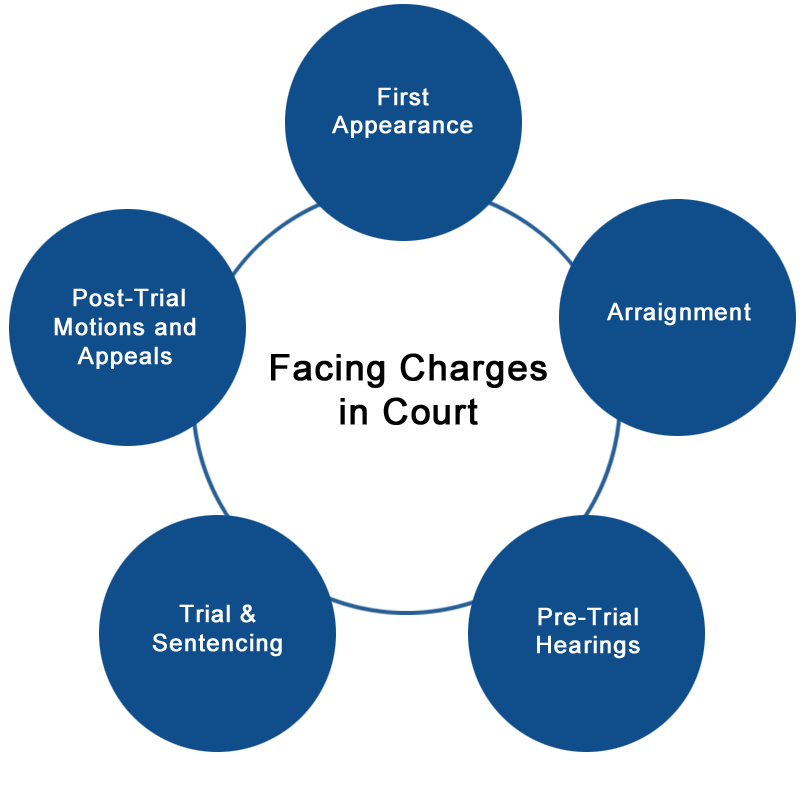 A criminal court case generally occurs as follows:
A criminal court case generally occurs as follows:
First Appearance: Occurring generally within the first 48 hours following an arrest, this hearing will formally lay out the charges faced by the accused and allow a judge to determine bail.
Arraignment: Here the charges are formally read before the accused, now considered the defendant. They will then be allowed to enter a plea of guilty or not guilty.
Pre-Trial Hearings: During these hearings, the parameters for the upcoming trial will be set and any motions to dismiss charges or suppress evidence will be heard.
Trial: Beginning with jury selection (if applicable), the formal trial will include opening statements, presentation of evidence, witness testimony and cross-examination, and closing arguments. After the trial, a verdict will be rendered by either a jury or a judge.
Sentencing: If the defendant is found guilty, the next court hearing will be to determine the penalty based on their criminal history, the nature of the crime, and several other factors.
Post-Trial Motions and Appeals: If grounds exist for a possible appeal following the verdict, post-trial motions will allow the defendant to present evidence of procedural errors or judicial misconduct.
Securing the Best Outcome for You
At The Law Office of Ken Gibson, we know that winning in court requires meticulous preparation. Our attorneys work smarter, work harder, and leave no stone unturned in preparing your defense. This thorough investigation into all the facts, executed on the moment you hire us, lets us walk into the courtroom knowing we understand your case better than anyone else.
Our legal team puts you first, because we don’t see you as another case number. You’re a human being with Constitutional rights, and it’s our duty to defend them. We’ve done the same for countless others, helping secure the best outcomes through our tenacity and in-depth knowledge of the Texas Penal Code. Submit your information below and let us start working for you.
